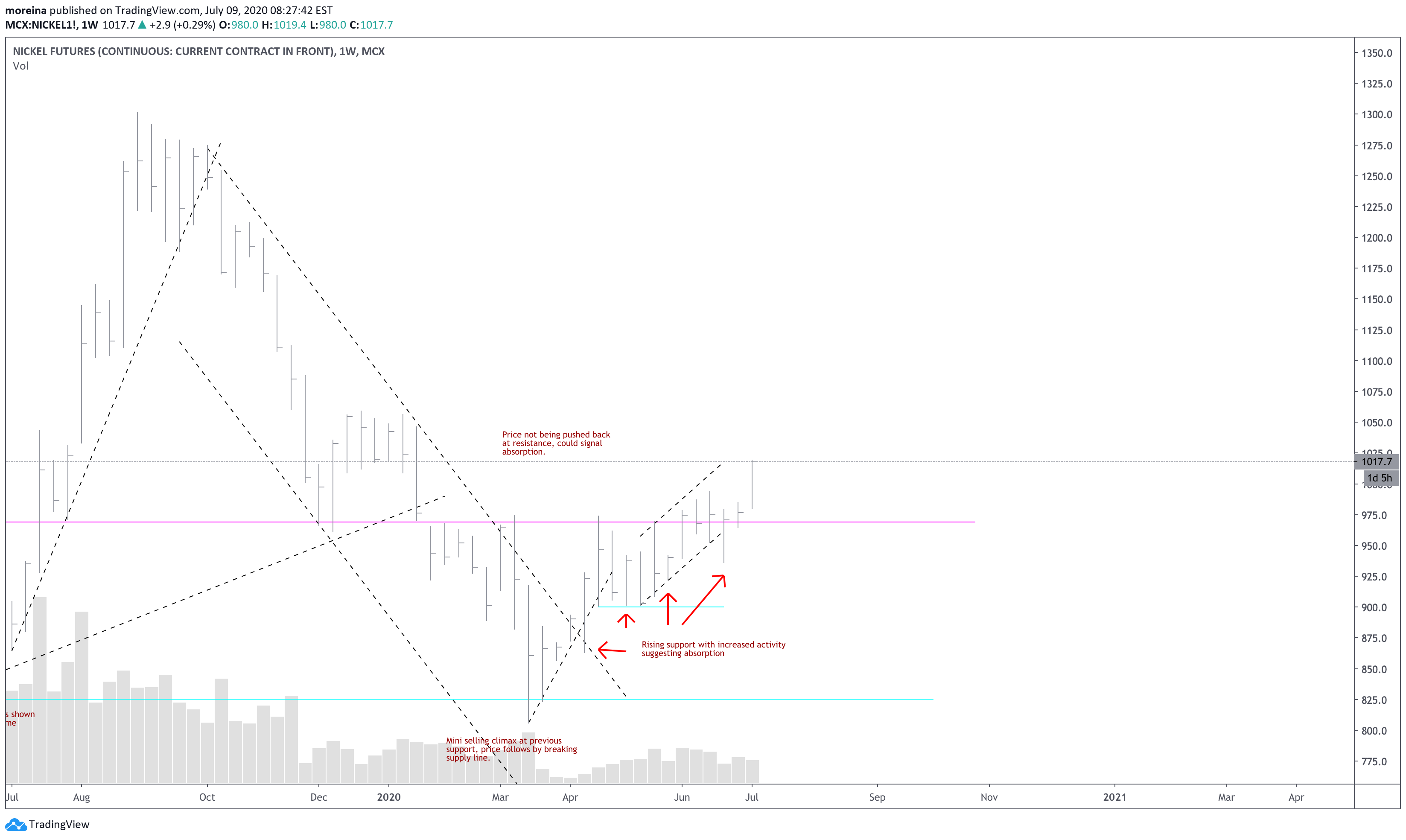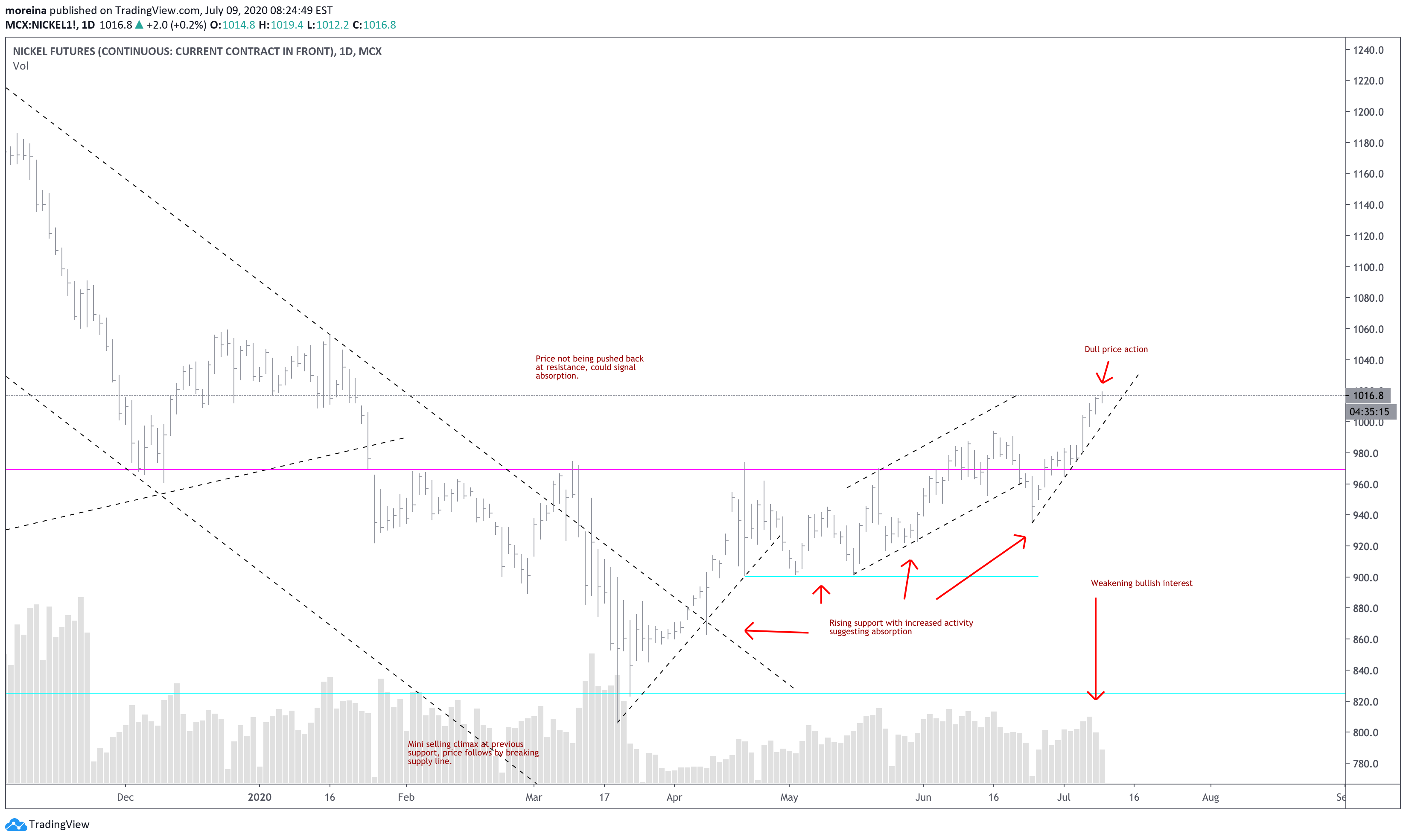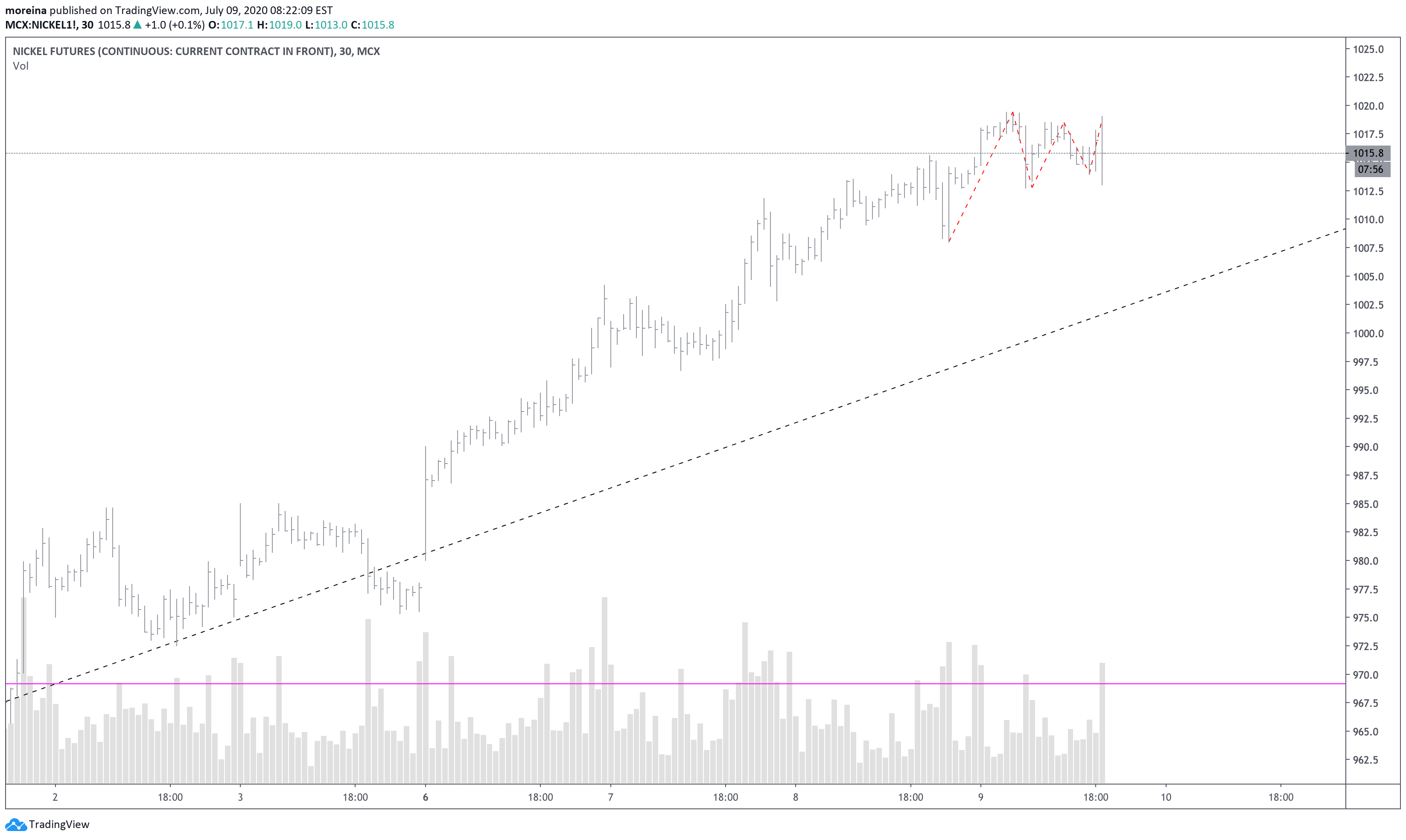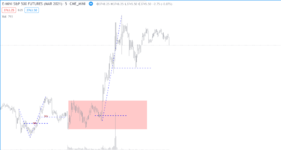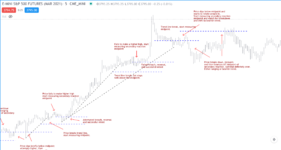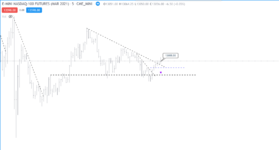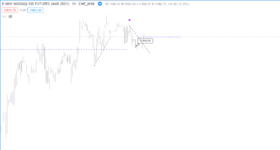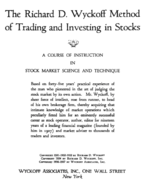Ok we'll retry our reversal and retracement strategy. The difference here is that the entry will only be triggered if the overall trend is in favor of the intermediate trend, as measured through the breach of the latest wave's midpoint.
A breach is considered successful only if price can hold the break, as shown by a higher low/lower high at the break or higher/lower in the direction of the move.
Retracement prerequisites:
1. Midpoint of last wave not breached
2. Reaction at its end (either it has become neutral or control has shifted back to the previous side)
3. Higher low/lower high
Reversal prerequisites:
1. Midpoint of last wave breached
2. Price breaks its stride
Entry:
"Confirmation" of a turning point (several ways to determine this, either price has retraced more than 50% of the last move, or there are two bars with higher highs after a low (if direction is long) or two lower lows (if direction is short). This by definition would include what people call a 3 bar reversal.
Stop loss:
Below the swing low
Early exit:
Price forms a lower low/higher high (from the entry point) and the succeeding minor wave fails to retrace 100% of that move.
Exit:
1. Price breaches the 50% RET of the last wave
OR
2. Price breaks its stride, tries to continue the move, then breaches the midpoint of that failed move.
So here we start with what looks like a reversal of the downward trend, as evidenced by a breach of the midpoint of the last selling wave.
Price waffles around a bit at the top then falls back down again. We now assume that the trend is neutral, as it seems undecided whether it wants to go up or down.
Selling pressure seems light as price fails to follow through to the downside and price starts to form what looks like the beginning of an intermediate bull swing. This fulfills our criteria for a reversal and also puts the instrument's position at bullish for both intermediate and minor trend, as described by Wyckoff. We go long with a stop at x.
Price breaks its stride but remains well above the midpoint and so far doesn't show signs of failure so we sit tight.
Buying pressure fails to push price higher and the minor move's midpoint is broken. This fulfills our criteria for an early exit so we take it for a breakeven in profit.
Trades:1, Wins:0, Losses:0, BE: 1
Sellers have now taken control as evidenced by the breach of the buying wave's midpoint with a successful retracement. We go short.
Selling pressure forces price to reverse and break its stride, and is now challenging the midpoint. Criteria for an early exit have not been met so we sit tight.
Successful breach of the midpoint. We close our short for a loss of 61 points. At this point looking at the preceding action we infer that selling pressure is now incapable of creating a down trend for the moment so we assume that the overall direction is up. We don't flip long immediately since we're not testing breakouts so we wait for a reaction and its end before entering long.
Trades: 2, Wins:0, Losses:1, BE:1.
Intermediate trend shifts to bearish, overall trend now unclear. We wait.
Failure to rally at the previous origin of the bull swing shows that the line of least resistance is now clearly down. A quick retracement and continuation allows us to enter a short. Since bear swings move much faster we take the first sign of the failure of the upward rally rather than wait for comprehensive failure as we would in a retracement of a bull swing.
Price reverses again and takes out our stop, for another loss of 63 points. Breakout at the selling wave's midpoint. We wait for clearer indications.
Trades: 3, Wins:0, Losses:2, BE: 1
Price rejects the halfway point and continues upwards. We enter long on the confirmed rejection.
Price breaks its stride and does a shallow retrace, then continues on its way up.
Buying pressure falters at the previous top and selling pressure forces price to retrace more than halfway the minor wave's length. We exit early for a profit of 20 points, and wait for another opportunity to go long.
Trades:4, Wins:1, Losses:2, BE:1. PnL: -6
Selling pressure fails to breach the halfway point of the last buying wave, and the secondary reaction falls well short, indicating the reaction is nearing its end. As soon as the higher low is confirmed we enter long.
Which promptly gets taken out for 46 points. Zooming out we seem to be just ranging so we box out the current price area and wait.
Trades:5, Wins:1, Losses:3, BE:1, PnL: -8
A direction seems to have been decided, with a successful breach of the upper range of the trading range. We wait for a retracement.
We get this opportunity when price breaks its stride then fails to follow through to the downside.
Buying pressure once again falters and price breaks its stride then breaches the halfway point of the failed continuation. We exit for a profit of 54 points.
Trades:6, Wins:2, Losses:3, BE:1, PnL: -2
We enter long again as the bear swing fails to get close to the halfway point and the reaction seems to be at its end.
A quick acceleration makes us fan the trendline, starting a new buying wave. This is promptly broken and price decisively breaks the midpoint of this new wave, causing us to exit and prepare to go short on the retracement. Profit 78 points.
Trades:7, Wins:3:, Losses:3, BE:1, PnL: -1
The selling wave's halfway point is instead rejected and price breaks up, and we enter long.
And our stop is quickly taken out for a loss of 72 points.
Trades:8, Wins: 3, Losses: 4, BE:1, PnL: -1.6
Results aren't great. Better than the previous one but much more refinement is needed, as well as a way to identify chop, where most of the losing trades seem to have happened.
